|
Wetland and Aquatic Plants
of
Oklahoma
Interactive Keys: Emergent
White Flowers
7.
Flowers with petals in lobes of four to six
Smartweeds
(Polygonaceae)
Note:
When identifying these species, observe the orcea; a sheath on the at
the base
of the leaf. Some species will have
bristles on ocrea and others will not. The
seeds of smartweeds are important food source
for waterfowl,
shorebirds, upland game birds, and song birds. The
common name smartweed is derived from that fact
that contact with
some species contact may cause an itching or burning sensation.
Marshpepper
knotweed (Polygonum hydropiper
L.)
Introduced annual.
Click thumbnails to enlarge
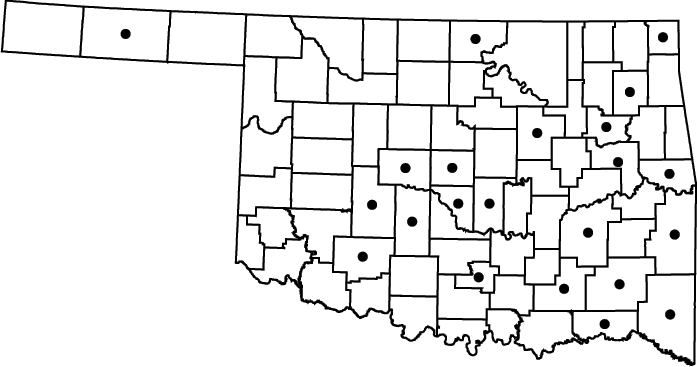
Notes: Grows erect, unlike swamp smartweed. Glands present on the flowers. The ocrea is
much longer than broad, inflated at the base, and has bristles less
than 1/4
inch long.
NWI status:
OBL
Swamp
smartweed (Polygonum
hydropiperoides Michx.)
Native
perennial
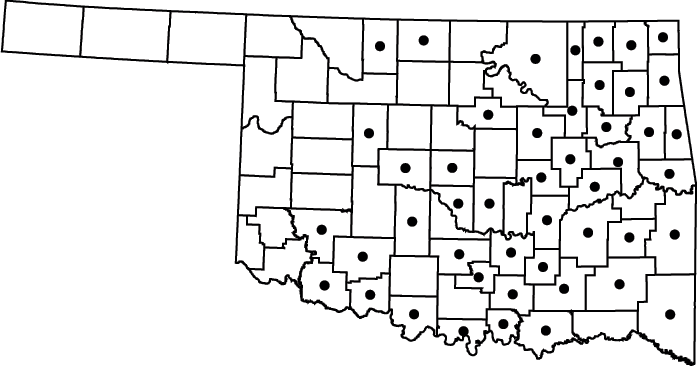
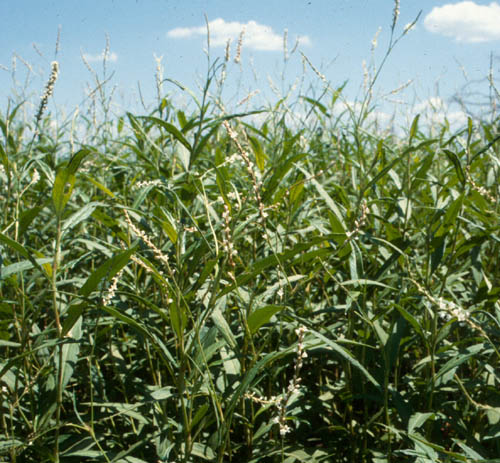
Note: This species tends to
creep along the soil surface and root at the node.
The ocrea is approximately 1 inch long and hair.
NWI
status: OBL
Nodding
smartweed (Polygonum lapathifolium
L.)
Native annual.
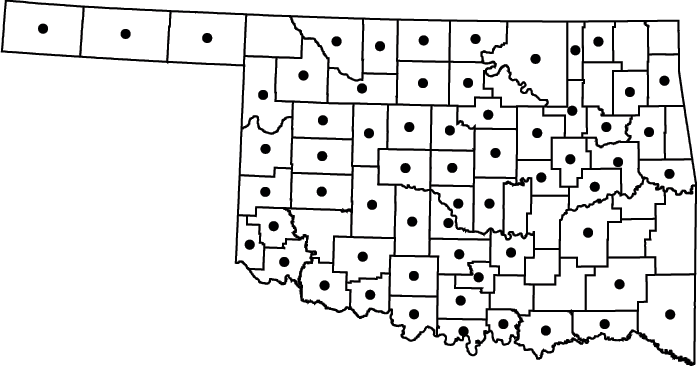
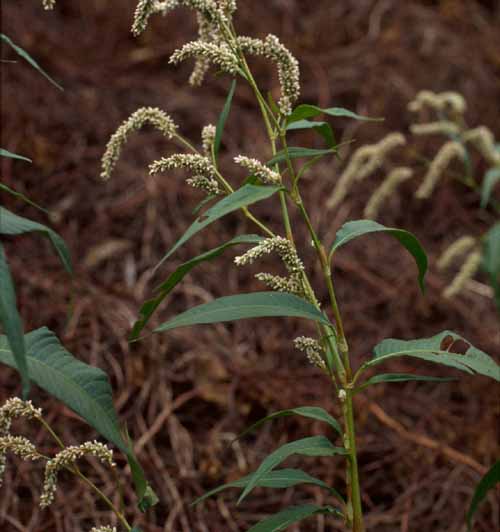
Note: This is a large, robust species of smartweed. The nodding inflorescence and the thick,
ocrea with prominent veins are key characteristics. Used
by the Potawatomie to treat fever.
NWI status:
FACW
Dotted
smartweed (Polygonum punctatum Ell.)
Native annual.
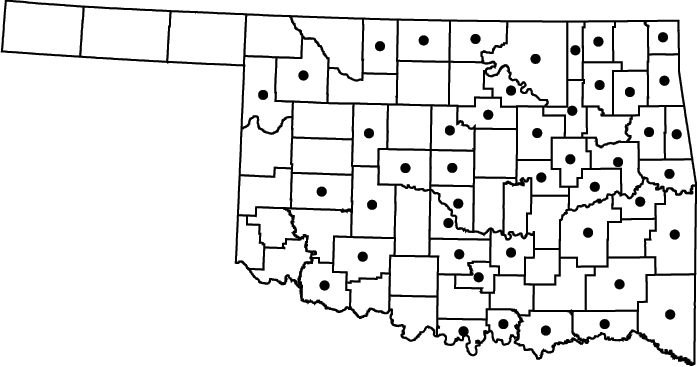
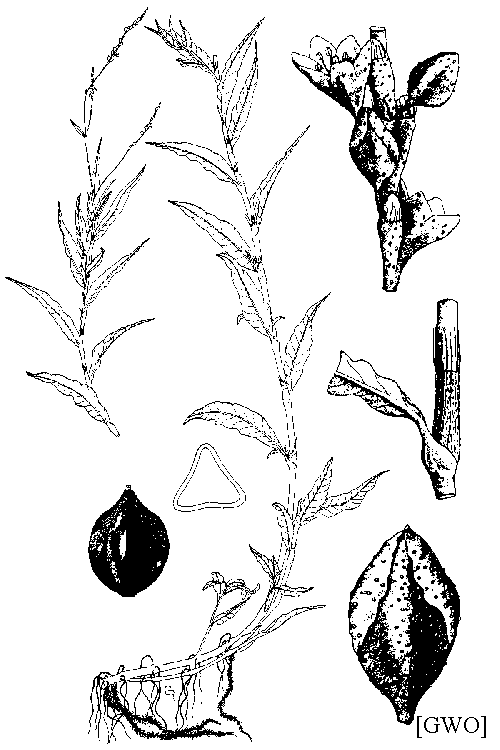
Note: Glands present on the flowers, but the ocrea
is not
inflated at the base.
NWI status:
FACW+
Arrowleaf
tearthumb (Polygonum
sagittatum L.)
Native perennial.
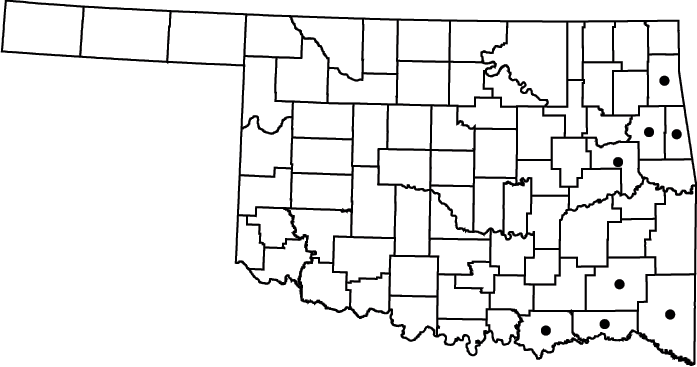
Note: This is a vining species.
The stems and leaves are covered in rare facing
spines that tear
at clothing and skin.
NWI status:
OBL
Dock (Rumex verticillatus
L.)
Native perennial.
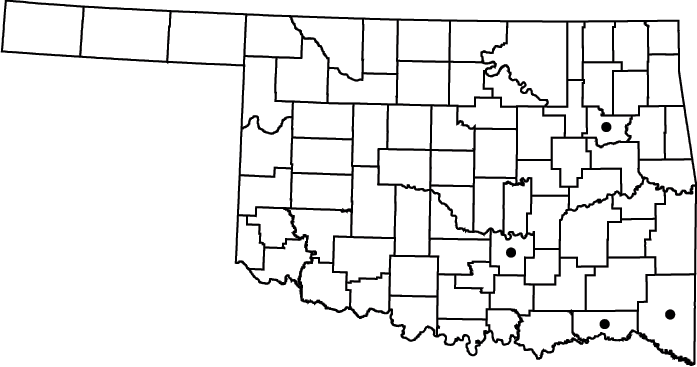
Note: Seeds are
consumed by waterfowl and song birds. The leaves of some dock
species are cooked as greens. The acidic sap has been used in
tanning leather. Used by the Choctaw to treat various diseases.
NWI status: FACW+
Last update: 2/18/04
Comments to : Bruce Hoagland
bhoagland@ou.edu
Go to Oklahoma
Biological Survey Home Page
 Disclaimer Disclaimer
|

